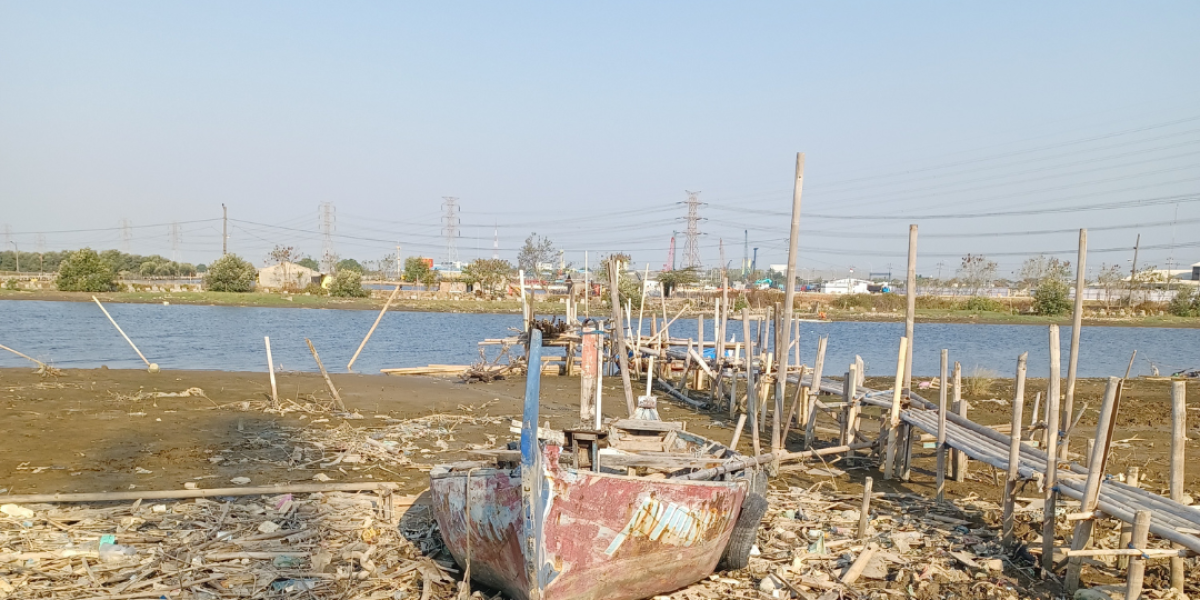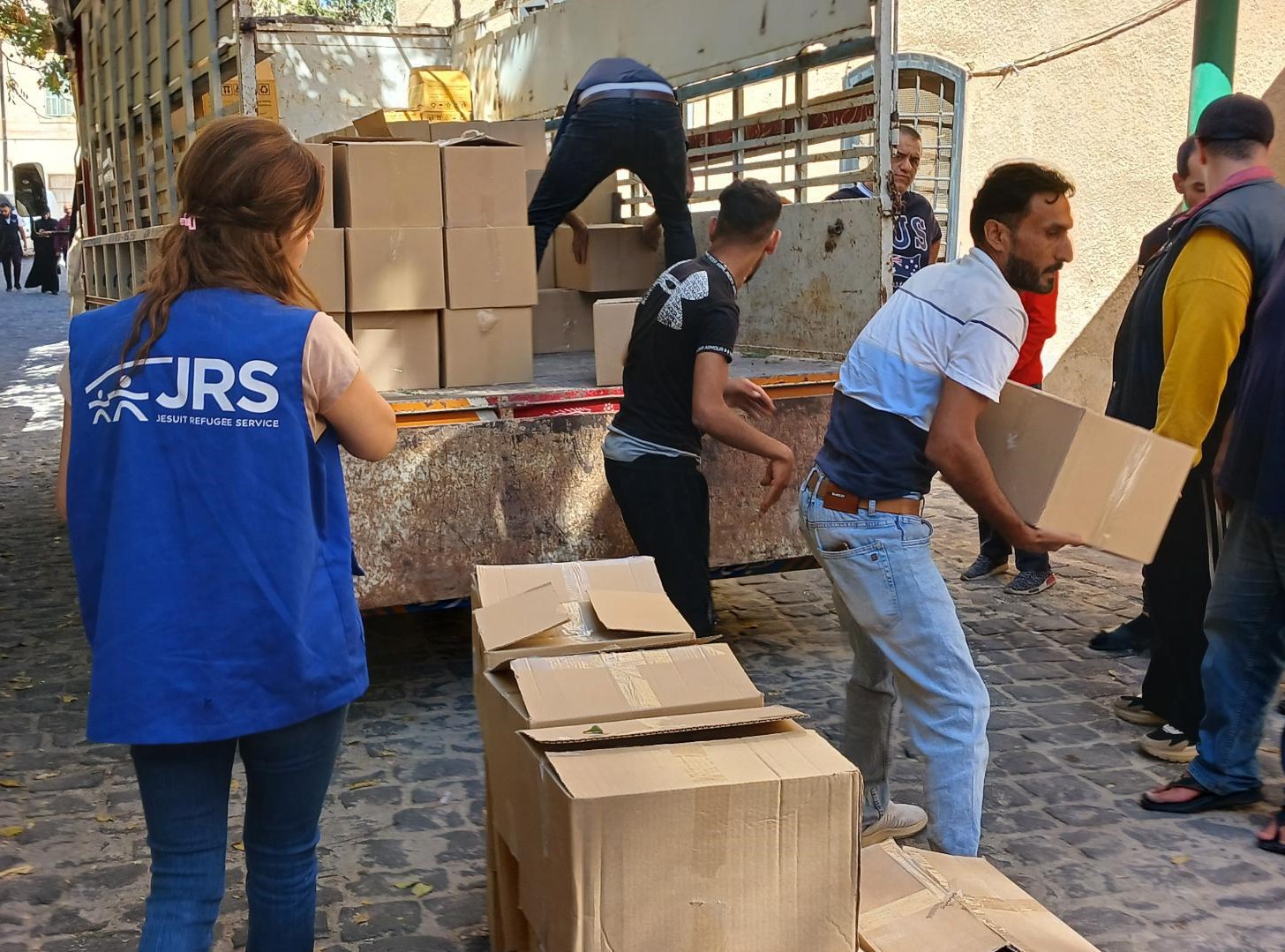Against Rising Tides, Two Women Race to Save their Village
22 April 2025|Chloe Gunther

This story first appeared in JRS INSIDER, a monthly newsletter including stories of impact across JRS global.
In his second encyclical, Laudato Si’, Pope Francis said, “[It] is indubitable that the impact of climate change will increasingly prejudice the lives and families of many persons. We will feel its effects in the areas of healthcare, sources of employment, access to resources, housing, forced migrations, etc.”
Tambakrejo, a fishing village in Central Java, Indonesia, was once marked by clear rivers, lush paddy fields, and open spaces where children ran around and played. Today, Tambakrejo braces on the frontlines of the climate crisis as rising sea-levels slowly submerge the village. Within the tight knit community, two women are leading the path forward and against this climate disaster. For them and many of their neighbors, leaving is not an option; they are staying to fight for their home and future generations.
“The connection we share with our neighbors, the sense of community, it’s what keeps us here,” Mrs. Sittatun said. “I’ve spent over 50 years here, from childhood to raising my own children.”
For Earth Day 2025, we are traveling to Tambakrejo to meet Mrs. Sittatun and Dinda to learn how they are defending their community and preparing for a sustainable future.
 Throughout her life, Mrs. Sittatun has tracked how severe weather events have worn at her village’s shore, buildings, and infrastructure. As we know, the most adverse climate disasters are usually endured by communities least responsible for global warming.
Throughout her life, Mrs. Sittatun has tracked how severe weather events have worn at her village’s shore, buildings, and infrastructure. As we know, the most adverse climate disasters are usually endured by communities least responsible for global warming.
In Mrs. Sittatun’s youth, seasonal tides simply determined when the village planted their crops and when they went fishing. Today, the unrelenting, year-round floods are forcing residents to move, rebuild or raise the floors of their homes, search for other means to make a living and find uncontaminated food to eat. Mrs. Sittatun has been forced to raise her floors three times already. Churches and other community centers also must relocate, fracturing and dispersing the population.
“Adaption doesn’t just mean building high walls. It’s about finding ways to preserve our way of life, our traditions, our sense of belonging, despite the challenges,” Mrs. Sittatun explained. “We have to adapt, not just for survival, but to keep our community intact.”
To do that, Mrs. Sittatun joined the Research and Advocacy for Climate Policy and Action (RACPA) project. Facilitated and implemented by a coalition of organizations including Jesuit Refugee Service Asia Pacific, its mission is to build climate resiliency in vulnerable coastal and island communities, empowering individuals and local leadership to address the pressing challenges of climate change.
Mrs. Sittatun is leading this charge by spearheading several community-based initiatives including the village’s waste bank project and teaching environmental conservation to elementary students. Instilling this stewardship in the next generation is what gives Mrs. Sittatun’s the most hope.
Dinda is a part of that next generation. Now 20 years old, she grew up watching the climate crisis rapidly escalate in her village. “Flooding damages roads, strong winds disrupt daily life, and fishermen like my father and brother struggle to go out to sea,” she shared. 
In response to her childhood and the needs of her beloved community, Dinda got involved with RACPA as well. The program includes advocacy and media training workshops for residents so they can sharpen and raise their voices. “[The media training] gave me the skills to share our stories on social media, raising awareness about tidal floods and the actions we can take to protect ourselves,” Dinda said.
Like Mrs. Sittatun, Dinda has taken a leadership role in RACPA and facilitates a mangrove planting project to protect the community against coastal erosion, an initiative Mrs. Sittatun eagerly joined. Across generations the two women are ensuring their village has the tools, means, and opportunities to defend their home.
“I hope to inspire more young people to join the environmental conservation movement,” Dinda said. “I now know how to assess our vulnerabilities and manage the impacts of floods. More importantly, I can share this knowledge with others, helping them feel empowered to act.”
For both women, these efforts are about preserving their identity, homes, history, culture, and future. As the tides rise, so does the resilience of Tambakrejo. As the community works toward sustainability, JRS Asia Pacific remains committed to accompanying them and countless others facing similar uphill battles.


